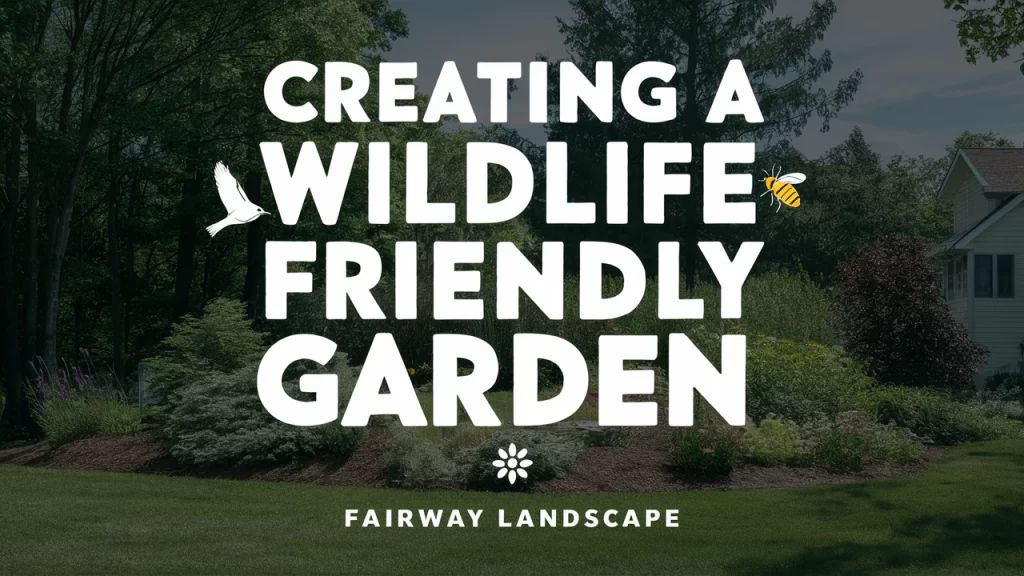Imagine stepping into your garden and being greeted by the flutter of butterflies, the cheerful chirping of birds, and the gentle buzzing of bees. A wildlife-friendly garden is not just a feast for the eyes – it’s a thriving ecosystem that supports local biodiversity and enriches your own connection with nature. Let’s explore how you can transform your yard into a sanctuary for wildlife.

Why Support Local Wildlife in Your Garden?
Creating a haven for wildlife offers a multitude of benefits:
- Biodiversity Support: By providing food, water, and shelter, you contribute to the health of local ecosystems and help preserve the delicate balance of nature.
- Natural Pest Control: Many wildlife species, like birds and ladybugs, are natural predators of common garden pests, reducing the need for harmful chemicals.
- Personal Enjoyment and Education: Observing wildlife in your backyard provides a source of joy, relaxation, and endless learning opportunities.
Interested in learning more about the ecological importance of native plants? Check out our previous blog post on the benefits of native plants.
Choosing Plants to Attract Wildlife: A Feast for All
The foundation of a wildlife-friendly garden is a diverse selection of native plants that cater to the needs of local wildlife.
- Pollinator-friendly flowers: Attract bees, butterflies, and other pollinators with vibrant blooms like milkweed, coneflower, and asters.
- Berry-producing shrubs: Provide a food source for birds and small mammals with shrubs like elderberry, serviceberry, and viburnum.
- Shelter-providing trees: Offer nesting sites and protective cover for birds and other creatures with native trees like oak, pine, and maple.
When selecting plants, consider factors like bloom time, height, and the specific needs of the wildlife you wish to attract.
Need help selecting the right plants? Our native plant selection services can guide you towards the best choices for your garden.
Incorporating Water Features for Wildlife: A Thirst-Quenching Oasis
Water is essential for all living creatures, so incorporating water features into your garden is a surefire way to attract a wider variety of wildlife.
- Bird baths: Shallow, easily accessible bird baths provide a refreshing spot for birds to drink and bathe.
- Small ponds: Even a small pond can attract frogs, dragonflies, and other aquatic life.
- Water fountains: The sound of running water can entice birds and other wildlife to your garden.
When installing water features, consider placement, size, and safety to ensure they benefit both wildlife and your landscape.
Learn more about creating a backyard oasis with water features in our blog post.
Designing Shelters for Garden Wildlife: A Safe Haven
Provide a variety of shelters and habitats to give wildlife a place to rest, raise young, and seek refuge.
- Birdhouses: Offer a safe nesting space for birds of different sizes and species.
- Brush piles: Create a natural habitat for insects, small mammals, and amphibians by piling branches, leaves, and other organic debris.
- Insect hotels: These structures provide shelter for beneficial insects like ladybugs and lacewings.
By providing a variety of shelters, you can support a diverse range of wildlife in your garden.
For a more customized approach, consider our custom garden installation services, which can help you design and build unique habitats for your local wildlife.
Maintaining an Eco-Friendly Garden: A Healthy Habitat
A wildlife-friendly garden is also an eco-friendly garden. Avoid using harmful chemicals and pesticides, as these can harm beneficial insects and other wildlife.
- Organic pest control methods: Use natural predators, barriers, and traps to control pests in your garden.
- Natural fertilizers: Enrich your soil with compost, manure, or other natural fertilizers to promote healthy plant growth.
- Integrated pest management (IPM): This approach combines various strategies to prevent and control pests in a sustainable way.
By embracing eco-friendly gardening practices, you can create a healthy and sustainable environment for both plants and wildlife.
For more tips on organic gardening, check out our previous blog post.
Creating a wildlife-friendly garden is a rewarding endeavor that connects you with nature and helps preserve local biodiversity. By selecting native plants, providing water sources, creating shelters, and embracing eco-friendly practices, you can transform your backyard into a thriving ecosystem.
If you’re ready to create a garden that welcomes wildlife, Fairway Landscape is here to guide you. Contact us at (443) 206-0221 to schedule a free consultation and discover how our expert garden design and wildlife support services can create a haven for nature in your backyard.
